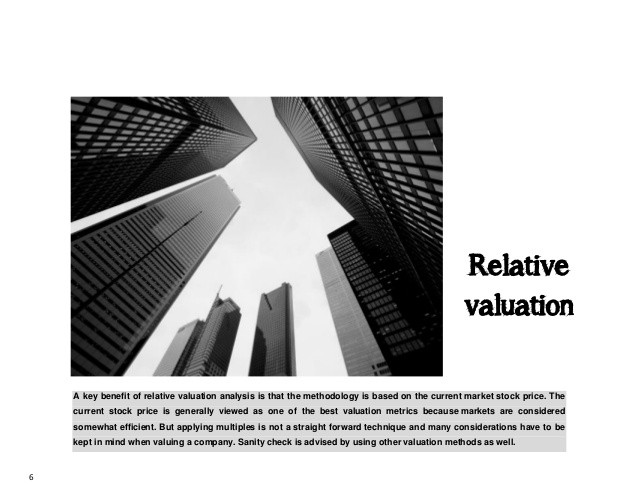The Benefits of Hybrid Valuation Models
Post on: 7 Май, 2015 No Comment

JANUARY 2006 — It is widely accepted that business value is derived from the stream of discounted future benefits to the owners. The primary difference among the various valuation approaches is attributable to the method in which those benefits are estimated. Controversy exists among valuation practitioners and academics as to which methods are most appropriate, as evidenced by, among other things, the substantial amount of litigation and other legal proceedings surrounding valuation issues. The importance of developing reliable valuation estimates cannot be overstated, especially considering their impact on matters such as estate tax liability, business acquisitions, buysell agreements, and the division of assets in marital dissolutions. Research on the theory and application of valuation methods often yields mixed results, which only exacerbates the debate.
Business valuation theory recognizes three broad approaches to estimating value: the income approach, the asset-based approach, and the market approach. The income approach uses an entitys estimated future income stream as a basis for value. The asset-based approach focuses on determining an entitys collective asset values. The market approach can be thought of as a derivative of the other two approaches (the application of some market multiple of assets or income). Because the income and asset-based approaches each demonstrate comparative advantages and weaknesses, it follows that some form of hybrid technique that utilizes a combination of income and asset-based data may be generally superior as a valuation model.
Income Approach
The most common methods of estimating value have traditionally involved the discounting or capitalizing of an income stream. In the income approach, variables such as earnings or cash flows are utilized as a proxy for the expected benefits to the owners of the business. Common examples of valuation methods under the income approach are the earnings capitalization model and the discounted cash flows model.
The effective implementation of any model with an income approach requires a reasonable estimate of the expected future benefit stream as well as an appropriate rate at which to discount the benefit stream. In a discounting model, a projection of income is estimated for a finite period, followed by a terminal value calculation that assumes a constant income growth rate from that point into perpetuity. The income stream is converted to present value by applying an appropriate discount rate. In a capitalization model, a representative level of income is capitalized into perpetuity at a capitalization rate determined by the difference between the appropriate discount rate and a constant, sustainable level of growth (i.e. a price-to-earnings multiple). The primary difference between discounting and capitalizing is the level of discretion afforded in controlling the growth of the income stream. In any case, reasonable growth assumptions and an appropriate discount rate are imperative for effective valuation.
Asset-based Approach
Asset-based methods typically involve restating both assets and liabilities to their current values to arrive at a net asset value. The restatement can be done on an individual component level (discrete valuation) or collectively (collective valuation). Given the relative difficulty of individually valuing a variety of assets, such as real estate, machinery and equipment, and inventory, it is often necessary to employ valuation specialists. Collective valuation requires a single analysis, which identifies the collective value of the assets and liabilities over and above their recorded GAAP value (i.e. a price-to-book multiple). Even with asset-based models, value remains a function of expected benefits to the owners. The value of assets is generally derived from either future income-generating potential or liquidation value, depending on the circumstances at a given time.
Hybrid Models
The income and asset-based approaches to valuation have relative strengths as well as obvious limitations. For example, the income approach allows for specific and direct estimation of future benefits to the owners, which is consistent with the theory of value. On the other hand, if the estimation of future benefits is directly based on historical income, the precision of the estimate will depend heavily on the persistence embodied in the historical income measure and on the growth assumptions incorporated into the model. If, for example, current or historical income contains large transitory components, the relationship between historical and future income may be distorted. In addition, to the extent an inappropriate discount rate is utilized, value estimates will be adversely affected.
Asset-based valuation approaches can be effective in that the accurate identification of individual asset and liability values will yield a reliable value estimate. In addition, unlike the income approach, an equity discount rate, the estimation of which can have a significant impact on the valuation conclusion, is not required for an asset-based approach. On the other hand, it is often difficult to accurately restate GAAP book value to current value for an array of assets, especially when a significant amount of unrecorded intangible assets exists.
Implicit in comparing and evaluating the two approaches is the idea that each is partly a function of the particular context in which a company is being valued. A valuation model that simultaneously utilizes the relative strengths of each approach may be more effective.
The following example demonstrates the advantage of a hybrid approach that incorporates both income and asset data.
XYZ Company is a supplier of medical monitoring equipment. The results from the year-end financials show XYZs earnings and book value are $2.4 million and $76.3 million, respectively. The industrys comparable price-to-earnings (P/E) and price-to-book (P/B) ratios are approximately 10 and 1.5, respectively. The resulting value estimate from the income approach using market comparables to develop the earnings multiple is $24 million ($2.4 million x 10). The value estimate from the asset-based approach using market comparables to develop the book value multiple is $114.5 million ($76.3 million x 1.5). Given that XYZ is a publicly traded company with a market value of $64.5 million, the income approach resulted in a significant undervaluation of XYZ of $40.5 million (or 63% of actual value), while the asset-based approach resulted in an overvaluation of $50 million (78%).
A quick analysis of the information above reveals that XYZs profitability is quite depressed, as demonstrated by a return on equity (ROE) of approximately 3.7%, as compared to an industry average ROE of 9%. Despite the weak earnings performance of XYZ, the market is assigning an earnings multiple of approximately 27 (64.5 2.4), significantly higher than the industry multiple of 10. Further analysis demonstrates that the P/B multiple for XYZ is 0.85, quite low compared to the industry average of 1.5. Because the P/B method is designed to capture collective asset values above recorded book value and the market is valuing the company at approximately its book value, there appears to be no goodwill value. XYZ has been assigned a large premium on its earnings multiple, while receiving a significant discount on its book value multiple.

It is difficult to reconcile these results by only analyzing each model individually. Taken collectively, however, income and asset-based valuations generally yield better valuation accuracy and more-effective analysis, which is the real benefit of a hybrid approach. Take, for example, a valuation model that simultaneously generates earnings and book value multiples from market comparables, such as a multiple regression of price on both earnings and book value against a sample of industry peers. Incidentally, such regressions have been shown to produce viable estimates of the necessary capitalization rates for implementation of the excess earnings model, a popular, albeit controversial, hybrid model. This regression, performed on a large sample of market comparables from XYZs industry peers, produced earnings and book value coefficients of 6.843 and 0.556, respectively, which resulted in excess earnings capitalization rates of approximately 6.5% and 14.6% for tangible and intangible assets, respectively. Given the above data for XYZ, the value estimate derived from the earnings and book value coefficients directly is $58.8 million [($2.4 million x 6.843) + ($76.3 million x 0.556)].
Utilizing the excess earnings method to estimate the value for XYZ will, by definition, produce the same valuation estimate as derived above. In the excess earnings model, value is calculated as the sum of tangible net assets (in this case proxied by book value) and capitalized excess earnings. Excess earnings are calculated as earnings minus net tangible assets, multiplied by the expected return on net tangible assets, and then capitalized at the intangible rate to arrive at an estimate of intangible value, or goodwill. For XYZ, book value is $76.3 million and excess earnings are $2.56 million [($2.4 million $76.3) x 6.5%]. Unsurprisingly, excess earnings are negative, given XYZs relatively depressed profitability, and as a result, the excess earnings method yields a value estimate lower than book value, because estimated intangible value is $17.5 million ($2.56 million 14.6%). The value estimate produced by the hybrid excess earnings model (which equals the value estimate derived from the earnings and book value coefficients) of $58.8 million ($76.3 million $17.5 million) produced an undervaluation of only $5.7 million (9%).
The above results demonstrate that a hybrid approach provides a more complete analysis of value than either income or asset data alone. (For a comparison of value estimates of the hybrid, income, and asset-based approaches, see the Exhibit .) First, as previously mentioned, XYZs market value approximates its book value. As shown by the excess earnings method, this directly implies that XYZ has no positive intangible value, which can be interpreted in at least one of two ways.
In the first interpretation, the market thinks that XYZ will not survive; poor earnings performance, poor cash position, and large amounts of debt on the balance sheet may be responsible for this belief. In such an interpretation, XYZs liquidation value is approximated by its book (or tangible net) value. To the extent that company failure and liquidation is unlikely, a second possible interpretation is that XYZs book value serves as a better proxy for expected future normal earnings capacity than do current earnings. As previously discussed, XYZs ROE is low compared to industry standards. Because research on ROE has shown that profitability (especially extremely low or high levels) tends to move toward a normal or average level over time, one would expect XYZs earningsassuming the company survives or even thrives in the futureto increase to a level more commensurate with its book value over time.
Effectiveness of the Hybrid Approach
Utilizing a hybrid approach provides for a more comprehensive analysis of value based on earnings and asset data considered collectively. More broadly, research reveals that hybrid models are superior in valuation accuracy to single-variable models in general as well as in other economic contexts, such as when a company has significant intangible value. In the final analysis, the effectiveness of hybrid models is derived from their ability to simultaneously capture the multiple dimensions of valuation information contained in income and asset data.
David Jenkins, PhD, CPA. is an assistant professor of accounting in the department of accounting and management information systems at the Alfred Lerner College of Business and Economics at the University of Delaware, Newark, Del.














